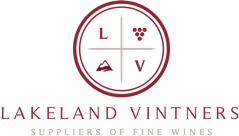IS IT ALL ABOUT THE VINTAGE?
What is a vintage?
A wine vintage is the year in which the grapes were harvested. A wine’s vintage can greatly affect the taste and quality, primarily because of the weather that affects the vines throughout the growing season.
What makes a good or a bad vintage?
If the vintage just reflects a region’s weather patterns each year, then what makes a vintage good or bad? Essentially, the defining feature of a vintage is sunshine. Sunny days give grapes the best chance of reaching full maturity and optimum ripeness levels. If a region receives too much rain and clouds, grapes do not fully ripen, may be more prone to rot and disease, and tend to deliver lower quality grapes. Conversely, if the region is too hot (too many days above 92 ºF / 33 ºC) and sunny, then grapes become astringent before they fully ripen, and the resulting wines may be flabby or have bitter tannins.
So, weather affects a vintage.
You can work out if a vintage was good or bad yourself by identifying key features about the weather in a vintage.
- Spring: Spring frosts are common in semi-continental climates (like Burgundy and Rioja) and destroy crops before they even flower. Hailstorms can break off flowers and buds, reducing the vintage’s size sometimes by up to 100%. These features do not necessarily reduce quality unless they greatly reduce the length of the growing season.
- Summer: Wet weather during the summer (like in Germany) causes fungal diseases which will ruin grapes. Conversely, drought and exceptionally hot weather (like in California or Argentina) causes the vines to pause their growth until cooler weather returns. These features can reduce quality in the grapes.
- Autumn: Rain at harvest swells grapes, causing them to lose concentration or rot. Cold weather slows grapes from ripening. Harvest time foul weather can greatly reduce the quality of a vintage.
Lesser vintages can offer better value.
Savvy customers know where to look for the best wine deals. A good vintage is a great time to buy affordable wine from lesser-known producers/ domains etc. because good grapes coming into the cellar mean less work (and less expertise) is needed from the winemaking. Equally, vintages declared as not so good offer an opportunity to buy at better value, explore drinking younger. Keep in mind that while one vintage may spell disaster for a region’s red wine crop, the cooler temperatures may raise the bar on regional whites by compensating for crisp acidity and vibrant palates.
Some of the best declared vintages.
1982, 1986, 1990, 2000, 2005, 2009, and 2010
Wines without a vintage date: Non-vintage wine is made by blending multiple years together. Non-vintage wines are known for their consistent, house style and are usually good value. For example, a common non-vintage wine is Champagne labelled simply as “N.V.”
Vintage guide example for French Regions 2021 - 2013
1 Very Poor - 10 Outstanding
Last word
Considerable debate continues as to who exerts more influence over a given bottle of wine. Is it the vintage or the vintner? In days gone by, wines were at the ruthless mercy of Mother Nature. However, in today’s tech-driven cellars the winemaker has plenty of tools available to combat and compensate for less than perfect weather cycles. From introducing specific strains of yeast to shake up aromatics or sculpt palate texture, to utilizing reverse osmosis to tame elevated alcohol levels and additives that adjust colour components, the winemaker’s toolbox is brimming with tips and tricks. So, rest assured, your new find or your favourite tipple will be just as enjoyable!
Phil
 Back to blog
Back to blog


